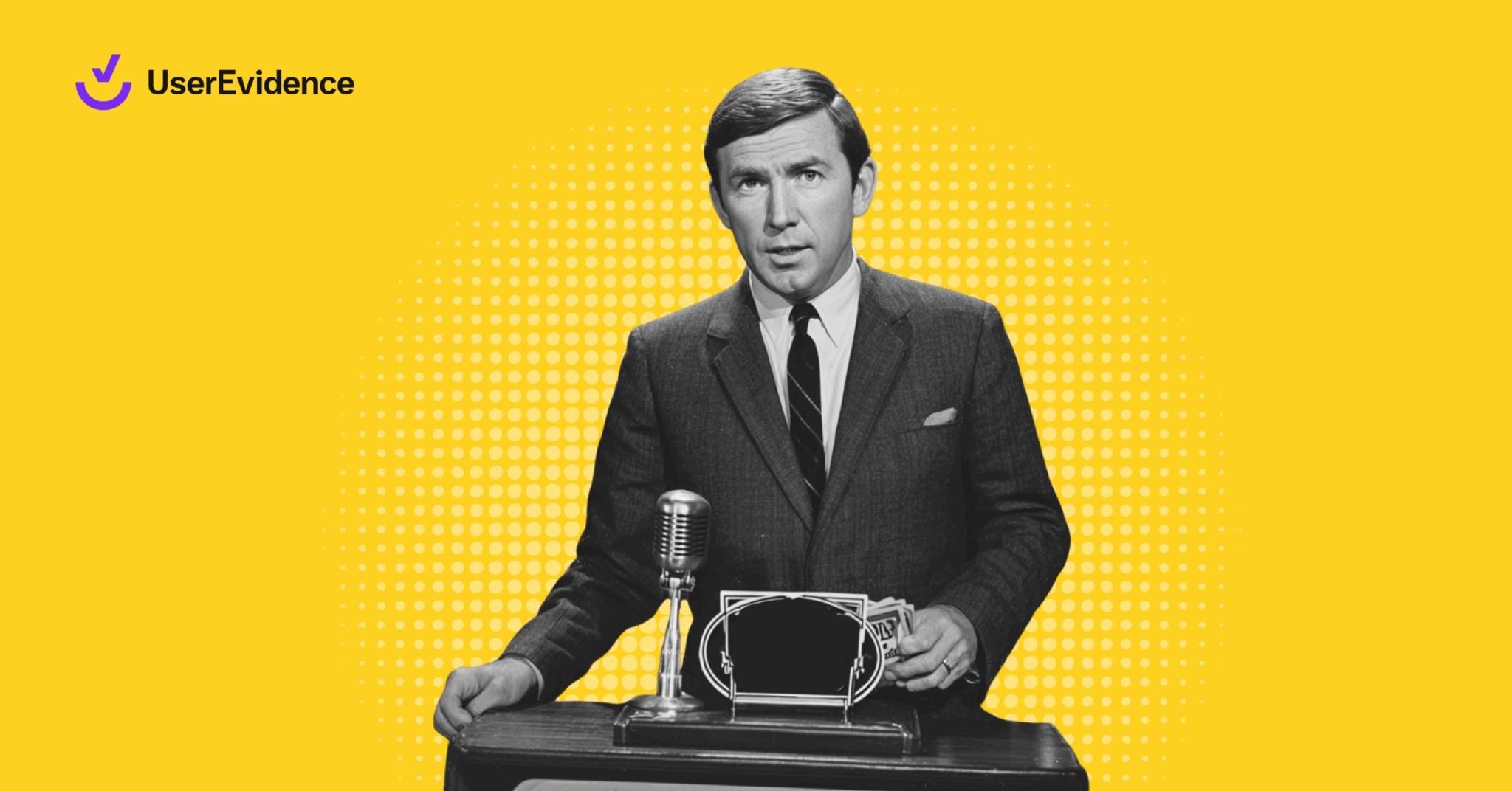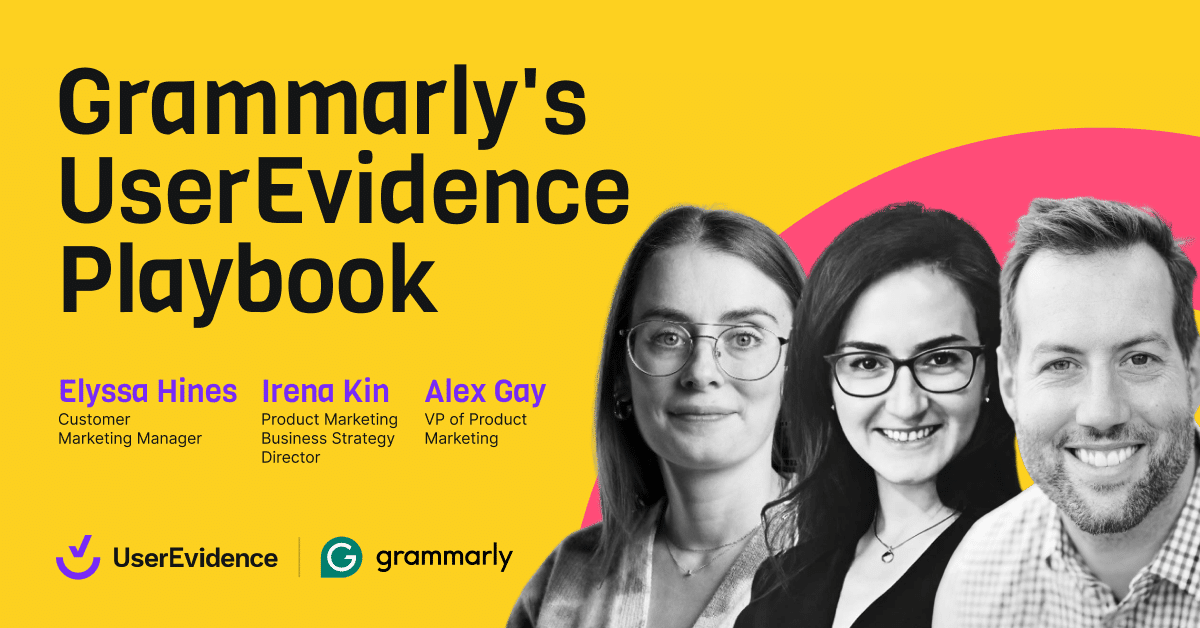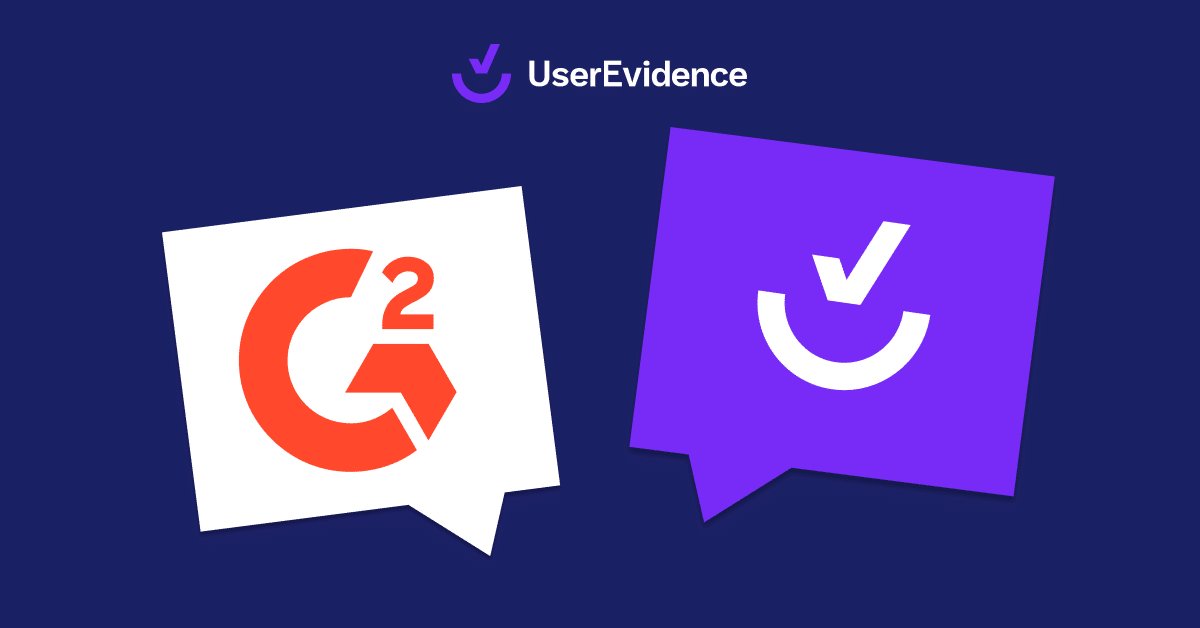Some things in life will always be challenging:
Running a marathon, keeping your houseplants alive (just me?), and selling software—especially to notoriously calculated buyers.
But, according to Andrea Wunderlich, Director of Product Marketing at Maxio (previously SaaSOptics and Chargify), selling software to hard-to-convince B2B audiences isn’t as tricky as you’d think.
Andrea opened my eyes to this: our struggle to seal the deal stems from an incorrect mindset and focus on the wrong talking points.
Here’s what she shared about navigating these tough deals and the strategies you can use to win over any audience:
It’s all about building trust.
But what does this trust-building process look like in the real world? Let me break it down for you in a few simple, easy-to-follow steps.
First: Ditch the overemphasis on your own ROI
Conventional wisdom would have it that selling to the C-Suite requires a spreadsheet and hard numbers to support your software’s “real-world impact.”
According to Andrea, that’s the opposite of the approach you should take.
“Your math sucks, and theirs is good,” Andrea remarked. “If you try to assert your math on them, they’re going to poke holes, which, more times than not, won’t go in your favor.”
She put it even more bluntly: “If you present CFOs with a traditional ROI analysis, they’re going to call your BS, and that’ll erode trust.”
Talk about a lightbulb moment for me.
According to Andrea, the smarter and more effective path to trust (and closed-won business) in the buying process revolves around:
- Solid social proof: What testimonials, quotes, and customer evidence can you share with buyers—ideally from their peers—to build confidence and make their decision easier?
- Clearly articulating their pain: What problem or pain point is your product solving? Can you call attention to pain points that haven’t thought of yet?
- An idea of where the budget comes from: Where will the dollars for your product come from given their existing budget?
- A solid business case: How can you demonstrate your product’s tangible benefits and how will it impact their bottom line?
Check these boxes, and closed/won will be much closer than it would have been if you had steamrolled into the Zoom room with an ROI calculator you spent six figures to build (which I’ve done before).
Building trust during the sales process is key—you won’t get your foot in the door any other way—but your job is just getting started. Now, it’s time to build upon that trust by helping buyers quickly realize value and stick with your product for years.
Then: Focus on adoption, enablement, and eventual expansion
You’re off to a great start.
You convinced those notoriously calculated buyers by highlighting social proof from their peers, clearly communicating how your product will help them overcome key challenges, having strategic conversations about budget, and making a business case they can’t refute.
Now what?
Lean into product adoption and enablement to ensure they realize value and you fulfill the promises you made during your pitch. Unfortunately, the playbook many marketers have historically used to drive adoption isn’t nearly as effective as it once was.
Andrea said, “With that playbook, marketers don’t have any adoption-focused campaigns and initiatives to ensure their customers realize product value.”
Her point is that most B2B marketers aren’t doing enough to prove product value during those critical first few weeks and miss the chance to create the sticky experiences necessary to turn everyday users into true advocates who’ll stop at nothing to keep a line in their budget for your product.
To ensure you deliver those value-added experiences and keep your customers coming back for more (from an adoption and expansion standpoint), Andrea suggests investing in customer marketing, but with a heavy focus on adoption.
“You can’t get to expansion and advocacy without adoption,” she said. “Driving adoption is about identifying your product’s value paths. What must people do to realize value, and how can we coach them to these ‘aha’ moments?” For Andrea and the Maxio team, that path to locked-in status involves getting customers to adopt the billing and invoice aspect of their product.
“One of the biggest challenges with buying software is the adoption and integration pieces,” Andrea noted. “It’s not easy for buyers to give their Revenue Operations team time to evaluate a product and connect it to their tech stack. It’s even harder to train and enable new customers on how to realize enough product value to become advocates.”
Andrea said that many B2B marketers are dropping the ball at this stage, but she shared a few strategies she uses to ensure the ball starts flies in the right direction.
She said, “We run a lot of customer-facing webinars, but we put a lot of thought into who that customer is and what type of webinar they need.” She continued, “So, we divide our customers by expertise, ensuring a more advanced user isn’t sitting through a 101-level webinar.”
Andrea said she’s also focusing on beefing up Zendesk with more strategic content—think how-to guides—email nurtures, and in-app guidance that delivers contextual, timely, and intentional support to Maxio’s customers.
Again, the goal is to empower your customers and turn them into advocates who not only get their peers to use your product, but also exand how they use it through upsells and cross-sells. To do that, you must pinpoint what’s important to your customers and guide them to those outcomes.
Do that and you’ll be in great shape.
Make your customer advisory board (actually) helpful
What’s a great way to turn your customers into advocates who sing your praises and grow with with you?
Customer advisory boards or CABs that actually deliver value.
Andrea said, “a CAB should act as the voice of the customer and give you a chance to learn. But more often than not, the goal isn’t to learn but to present the executive-level vision or the product roadmap and get positive feedback.”
Her point: Many companies don’t want the raw feedback and real experiences they need to improve. Instead, they want to put their best customers in a room, get a bunch of thumbs up and, ultimately, validation for the board.”
She put it brilliantly: “Most companies are like, ‘Hey, we put together this CAB, showed them our vision and everyone was excited.’” She continued, “Then, the board said great, so let’s move on.”
That’s what most CABs are—she called them giant echo chambers—but they’re not doing anyone any favors, and frankly, they’re wasting everyone’s time.
The key to building better CABs: Make them a two-way street
I’ve run CABs in the past, and I fundamentally agree with Andrea’s sentiment. Nine times out of ten, they are one-way streets designed to source positive feedback and reassurance.
Is that feedback and reassurance valuable? It’s worth its weight in gold, especially to the board, but another side of the coin exists.
CABs should be two-way streets built to source as much value from your customers (and deliver the most value to them, too). They should be a place for networking and collaborating, and act as a sounding board for your customers.
Most importantly, though, Andrea said they should represent a realistic sampling of your customer base.
Andrea said that B2B marketers need to stop thinking of advisory boards as a form of advocacy because that’s not necessarily what you want from the customers within your CAB.
You want the good, bad, ugly, and everything in between.
“The right thing for marketers to do is to divorce the CAB from advocacy. It’s not an advocacy thing. It’s a research thing,” says Andrea.
Not only do these two-way-street CABs give you invaluable feedback, but because you’re making it clear that they’re just as much for customers as they are for you, you’ll build trust, which will go a long way when it comes time for custoers to renewal or consider expansion opportunities.
Finally: Lean on influencers and SMEs to build—and maintain—trust
Andrea quickly pointed out she’s not a finance “guru”, which created some friction with buyers in her early days at Maxio.
“Failing your way through anything with finance and accounting people is hard. You’re either a CPA or not—and I’m certainly not.” She continued, “I fumbled through webinars and felt imposter syndrome because finance and accounting aren’t my areas of expertise.”
So, instead of faking it or potentially eroding trust with finance people hanging on every word she said, she built relationships with people whose bread and butter is finance:

“I've started forging relationships with SMEs, asking them to be a part of our content effort, and ultimately passing the reins off to them because they deeply understand the space.”
At the end of the day, building trust with any audience requires a certain level of fluency in their language. If that’s not you, that’s fine.
But just like Andrea did at Maxio, that requires realizing that you don’t know what you don’t know and your best bet is to find trusted authorities in your space who can have those trust-building conversations with your buyers.
Building trust with B2B audiences doesn’t have to be a nightmare
I want to make this abundantly clear: winning over B2B buyers isn’t that difficult.
Are some trickier to work with than others? Of course. Will some customers take longer to latch onto your product than someone with the same use case and level of expertise? I can guarantee that.
These challenges will always exist in B2B marketing, but you can prepare to face them head-on with this simple advice: Build trust and hold onto it like your life depends on it.
Here’s a quick recap of Andrea suggests you do that:
- Skip to fluffy ROI conversations and focus on proof points they can’t push back on
- Keep the momentum going after the sale with an investment in product adoption, enablement, and expansion
- Use CABs to turn you rcustomers into ultimate brand champions
- Bring SMEs into the picture if you’re not quite ready to have authentic, relationship-building conversations with your audience
And that, my friends, is how you build trust with a B2B audience.
Listen to the rest of what Andrea had to say, or head over to our YouTube channel to learn more about how to turn happy customers into your best sellers.





